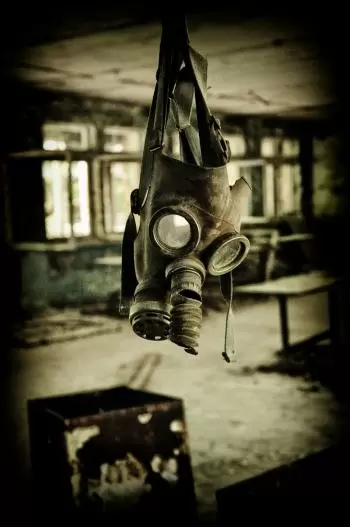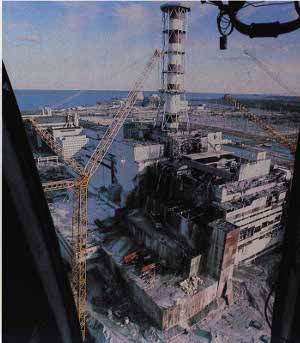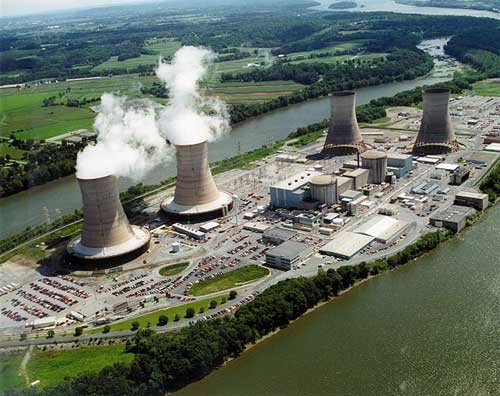
Without a doubt, the main drawback of nuclear energy is the possibility of nuclear accidents. Although nuclear power plants have many security systems and that atomic disaster are not common, they happen. And then, the consequences can be grave.
A nuclear accident can take place in:
-
Nuclear power plants.
-
Nuclear fuel treatment.
-
Facilities working with nuclear energy such as hospitals or research labs
-
Nuclear weapons tests.
Nuclear accident definition
We define nuclear accidents as those accidents in nuclear power plants or establishments that use nuclear technology. These accidents can be caused by technical or human failure. They usually entail releasing radioactive products into the environment. These emissions can also harm public health significantly.
We can also define a radiation accident as the loss of control over the source of ionizing radiation caused by:
-
Equipment malfunction.
-
Improper actions of operators
-
Natural disasters.
-
Other reasons that could lead to exposure of people above-established standards or radioactive contamination of the environment.
What are the worst nuclear disasters ranked?
One way to define the different types of nuclear accidents is according to their severity. Therefore, it has been described a scale in order to rank the accidents depending on their severity. This scale is the International Nuclear Event Scale (INES Scale, in short).
These are the worst nuclear disasters ranked by their severity:
1. Chernobyl, Soviet Union (currently Ukraine) - 1986

Chernobyl’s disaster is the world’s worst nuclear accident by far (ranked at level 7 on the INES Scale).
The cause of the accident was a stress test carried out in the plant that triggered the explosion of the reactor. The accident that occurred in April 1986 was due to several human errors in previously planned tests.
A cloud of radioactive material spilled from the reactor and fell over large areas around the plant. As a result, it contaminated the areas heavily and made it vital to evacuate the population nearby.
2. Fukushima’s nuclear disaster, Japan - 2011
The nuclear accident of Fukushima is the second-worst nuclear disaster after Chernobyl. It reached level 7 on the INES scale, a severe nuclear accident.
The Fukushima power plant accident took place in 2011. It was the result of a series of natural events that seriously affected the plant.
There was an earthquake of 8.9 degrees on the Richter scale near the northwest coast of Japan. As a result, it generated a tsunami that severely affected the cooling system of the nuclear reactor core. The overheating caused some partial meltdowns in the core that led to the reactor accident.
3. Kyshtym nuclear disaster, Russia - 1957
Mayak is the name by which a complex with nuclear equipment is known. It is between the cities of Kaslo and Kyshtym, in the province of Cheliabinsk, in Russia.
In this complex, there have been numerous radioactive leaks which the worst was ranked at level 6 of the INES scale.
4. Goiania, Brazil - 1987
In September 1987, the city of Goiânia in Brazil suffered a radioactive contamination accident (ranked at level 5). Two men robbed one teletherapy device and manipulated it. They removed a cesium capsule from its protective housing, which made it a radioactive source of cesium-137.
The residences and public places were seriously contaminated. As a result, four people died, and another 28 suffered radiation burns.
5. Three Mile Island, USA - 1979
 After the first year of operation, in March 1979, the plant near Harrisburg - Pennsylvania - suffered an escape of radioactive products. The disaster was ranked at level 5.
After the first year of operation, in March 1979, the plant near Harrisburg - Pennsylvania - suffered an escape of radioactive products. The disaster was ranked at level 5.
The misinterpretation of the data caused grave errors in specific decisions of the staff of the plant. As a result, although the nuclear reactor’s core was severely damaged, it had a narrow escape of radioactive products abroad.
The accident was ranked at level 5 on the International Nuclear Event Scale (NES Scale).
6. Chalk River Nuclear, Canada - 1952 and 1958
The first Chalk River nuclear accident occurred in Canada in the NRX nuclear reactor (ranked at level 5). The disaster took place on December 12, 1952.
On May 24, 1958, the same power plant suffered another accident in the NRU reactor. In this case, a uranium nuclear fuel rod caught fire and broke in two while removed.
7. Windscale Pile, United Kingdom - 1957
In October 1957, a nuclear accident occurred at Windscale Pile in reactor number one. It became the worst nuclear accident in the history of the United Kingdom (ranked at level 5).
The Windscale fire led to the release of radioactive materials in the surrounding area. The radiation could have caused about 240 cancer cases. No one had to be evacuated from the affected area, but there was concern about the possible contamination of the milk.
8. Tokaimura, Japan - 1999
In September 1999, it occurred the nuclear accident of the Tokaimura uranium fuel treatment plant (ranked at level 4). All indications pointed out that it was due to human failure. The damages produced in the equipment and biological barriers were significant and the fatal exposure of the workers.
A worker at the plant received the highest radiation dose to which a human being has ever been exposed. Hisashi Ouchi received an amount of between 10 and 20 sieverts that caused his death within a few weeks.
9. Saint Laurent des Eaux, Francia - 1980
The worst nuclear accident in France occurred at the Saint Laurent des Eaux nuclear power plant (ranked at level 4). In March 1980, a failure in the cooling system caused the melting of a fuel channel in the reactor.